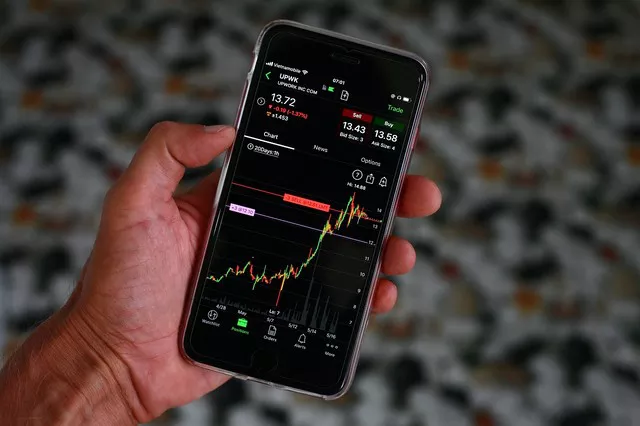Futures contracts serve as essential financial instruments in various industries, allowing participants to manage risk and speculate on future price movements. Understanding the value of a futures contract is crucial for market participants, as it enables informed decision-making and effective risk management strategies. In this article, we will explore the mechanics of valuing futures contracts and shed light on the factors that influence their fair pricing.
The Basics of Futures Contracts
Before diving into the valuation process, let’s briefly review the basics of futures contracts. A futures contract is a standardized agreement between two parties to buy or sell an underlying asset at a specified price on a future date. The underlying asset can be commodities like crude oil, natural gas, agricultural products, financial instruments, or even stock market indices.
Futures contracts are traded on regulated exchanges, where buyers and sellers come together to negotiate and enter into contracts. These exchanges ensure a transparent and efficient marketplace, setting rules and procedures for trading, clearing, and settlement.
Fair Value and Market Price
When valuing a futures contract, it is essential to distinguish between fair value and market price. Fair value represents the estimated value of a futures contract based on objective factors such as the underlying asset’s current price, interest rates, dividends (if applicable), and time until expiration. Market price, on the other hand, is the actual price at which the futures contract is currently trading in the market.
Factors Influencing Futures Contract Valuation
Several key factors influence the valuation of futures contracts. Understanding these factors is crucial for accurately determining the fair value of a contract. Let’s explore them in detail:
-
Underlying Asset Price
The current price of the underlying asset is a primary driver of futures contract valuation. As the price of the underlying asset changes, the value of the futures contract adjusts accordingly. For example, if the underlying asset’s price increases, the value of a long (buy) futures position increases, and vice versa.
-
Risk-Free Interest Rate
The risk-free interest rate represents the return on investment with no risk. It plays a significant role in futures contract valuation, as it accounts for the opportunity cost of holding the contract. Higher interest rates decrease the present value of future cash flows associated with the futures contract, thereby reducing its value.
-
Dividends and Income
For futures contracts on assets that generate income, such as stocks, dividends or income from the underlying asset must be considered. Dividends are typically reflected in the futures contract price through an adjustment known as the cost-of-carry.
-
Time to Expiration
The time remaining until the futures contract expires impacts its value. As expiration approaches, the contract’s value tends to converge with the spot price of the underlying asset. This process is known as convergence or expiration effects.
-
Volatility
Volatility refers to the degree of price fluctuations in the underlying asset. Higher volatility increases the potential for price movements, which can impact the value of the futures contract. More volatile assets tend to have higher futures contract prices due to the increased risk associated with them.
Valuation Techniques for Futures Contracts
Valuing futures contracts typically involves the application of mathematical models. Two common approaches for valuing futures contracts are:
-
Cost-of-Carry Model
The cost-of-carry model calculates the fair value of a futures contract by considering the cost of financing, storage, and income generated by the underlying asset. This model assumes that the futures price should reflect the spot price plus the cost of carrying the asset until the contract’s expiration.
-
Discounted Cash Flow (DCF) Model
The DCF model values futures contracts by discounting the expected future cash flows associated with the contract. This approach considers factors such as the risk-free interest rate, dividends or income generated by the underlying asset, and the time to expiration.
Both models provide a framework for estimating the fair value of a futures contract based on underlying market conditions and assumptions. Market participants may use these models as guides for pricing decisions and evaluating potential trading opportunities.
Market Forces and Fair Pricing
It is essential to recognize that futures contract prices are ultimately determined by market forces of supply and demand. While fair value estimation provides a theoretical benchmark, market participants’ expectations, sentiment, and trading activity can influence the actual market price.
Arbitrageurs, speculators, and hedgers actively participate in futures markets, seeking opportunities to profit from price discrepancies or manage their risks. Their actions, driven by market sentiment and analysis, can impact the market price of futures contracts, potentially deviating from their fair value.
Conclusion
Valuing futures contracts is a vital skill for market participants seeking to effectively manage risk and capitalize on price movements. Understanding the factors that influence futures contract valuation, such as the underlying asset price, risk-free interest rate, time to expiration, and volatility, enables participants to make informed decisions.
By employing valuation techniques such as the cost-of-carry model or discounted cash flow model, market participants can estimate the fair value of futures contracts. However, it is important to acknowledge that market dynamics and participant behavior can cause prices to deviate from fair value.
Overall, grasping the fundamentals of futures contract valuation empowers individuals to navigate the complex world of derivatives trading and make sound investment and risk management choices in the futures market.


